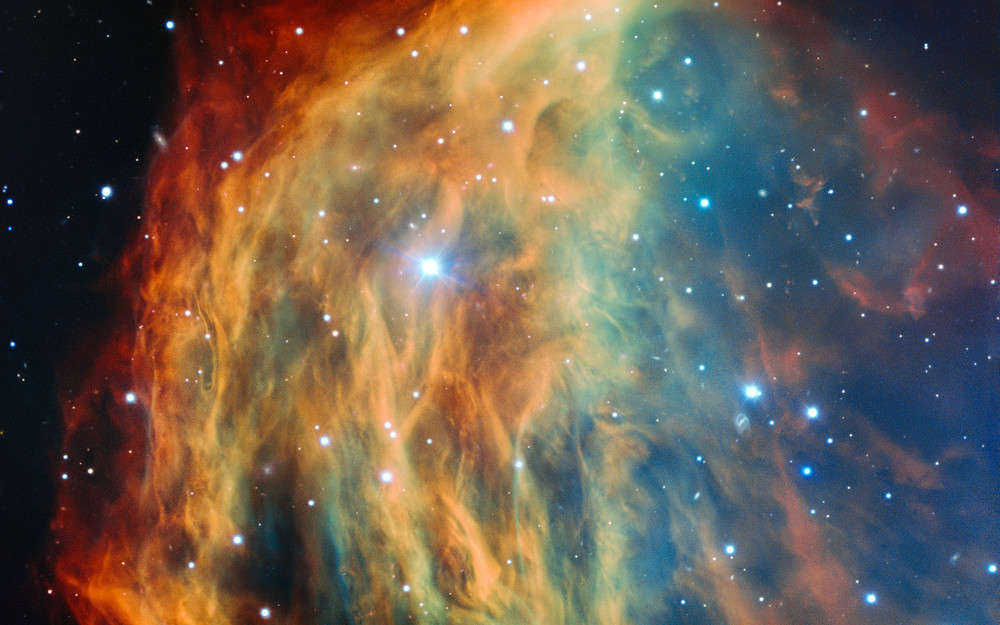The Cosmos with Abell 21
ESO’s Very Large Telescope in Chile has captured the most detailed image ever taken of the Medusa Nebula (also known Abell 21 and Sharpless 2-274). As the star at the heart of this nebula made its final transition into retirement, it shed its outer layers into space, forming this colourful cloud. The image foreshadows the final fate of the Sun, which will eventually also become an object of this kind.
The Medusa Nebula is a large planetary nebula in the constellation of Gemini on the Canis Minor border. It is also known as Abell 21 and Sharpless2-274. It was originally discovered in 1955 by UCLA astronomer George O. Abell, who classified it as an old planetary nebula. The braided serpentine filaments of glowing gas suggests the serpent hair of Medusa found in ancient Greek mythology.
Until the early 1970s, the Medusa was thought to be a supernova remnant. With the computation of expansion velocities and the thermal character of the radio emission, Soviet astronomers in 1971 concluded that it was most likely a planetary nebula.
As the nebula is so big, its surface brightness is very low, with surface magnitudes of between +15.99 and +25 reported. Because of this most websites recommend at least an 8-inch (200 mm) telescope with an [O III] filter to find this object although probably possible to image with smaller apertures.

ESO’s Very Large Telescope in Chile has captured the most detailed image ever taken of the Medusa Nebula (also known Abell 21 and Sharpless 2-274). As the star at the heart of this nebula made its final transition into retirement, it shed its outer layers into space, forming this colourful cloud. The image foreshadows the final fate of the Sun, which will eventually also become an object of this kind.